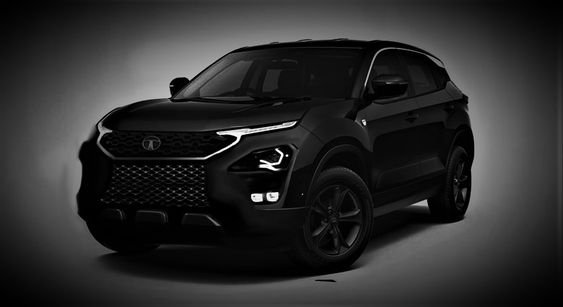
Bajaj Auto Limited, one of India’s leading two-wheeler and three-wheeler manufacturers, has recently seen its stock price hit a new 52-week high of Rs 11,972.85. The stock gained over 2% on Tuesday, settling at Rs 11,925 per share by the end of the trading session. During the same period, over 4.45 lakh equity shares were traded, underscoring the market’s strong interest in the stock. Bajaj Auto is also a component of the Nifty 50, with a market capitalization of Rs 3,33,014.70 crore, according to the National Stock Exchange (NSE).
The stock’s recent performance has been positive. In the past week, Bajaj Auto shares rose by 8.71%, and over the last two weeks, the stock appreciated by 8.16%. Over the last month, the company’s shares saw a growth of 20.8%, and in the past three months, they gained 19.93%. Year-to-date (YTD), Bajaj Auto shares have shown a remarkable increase of 78.26%.
Looking at the longer term, Bajaj Auto has demonstrated substantial growth. Over the last year, the stock has gained 132.74%. Over two and three years, it rose by 223.28% and 212.36%, respectively. In the last five and ten years, the shares have appreciated by 330.66% and 415.92%, respectively. This performance reflects the company’s strong market presence and its ability to navigate challenges in the highly competitive automotive industry.
CLSA’s Rating and Analysis of Bajaj Auto
Despite this strong performance, global brokerage firm CLSA has maintained an “Underperform” rating on Bajaj Auto‘s shares. The firm set a target price of Rs 7,000, indicating a potential downside of more than 40%, or Rs 4,972.85. CLSA’s cautious outlook is based on the increasing competitive intensity in the premium motorcycle segment.
Recently, Bajaj Auto and its partner Triumph launched two new motorcycles aimed at entry-level consumers. While CLSA acknowledges that these launches look promising, it remains cautious. The firm believes that the competition in the premium motorcycle segment is intensifying, which could impact Bajaj Auto’s growth trajectory in this space.
CLSA also highlighted the Speed T4, noting that it hits the right balance in terms of price and performance. However, the brokerage remains wary about whether this will be enough to maintain or grow its market share in the face of rising competition.
READ MORE: 2024 Maruti Suzuki Dzire: A Fresh Look at India’s Popular Sedan
Bajaj Auto’s Strategic Moves and Market Position
Bajaj Auto’s collaboration with Triumph is part of a strategic push into the premium motorcycle segment. This partnership aims to leverage Triumph’s expertise in high-performance motorcycles and Bajaj’s strengths in cost-efficient manufacturing. The two new models launched under this partnership are intended to capture a larger share of the market by appealing to both new riders and seasoned motorcyclists looking for affordable yet powerful options.
The launch of the new motorcycles could be seen as a significant step in Bajaj Auto’s strategy to diversify its product portfolio. This move aligns with its efforts to position itself not just as a leader in the mass-market two-wheeler segment but also as a formidable competitor in the premium motorcycle market.
However, the road ahead is challenging. The premium motorcycle segment has become highly competitive, with players like Royal Enfield, KTM, BMW, and Harley-Davidson expanding their presence. To succeed, Bajaj Auto will need to offer a unique value proposition that resonates with consumers in this segment.
Dividend History and Shareholder Returns
Bajaj Auto has been consistent in providing dividends to its shareholders, reflecting its commitment to returning value. In June of this year, the company paid a dividend of Rs 80 per share. In previous years, it announced dividends of Rs 140 each in 2021, 2022, and 2023. In 2020, the company declared a dividend of Rs 120, with the ex-dividend date set on March 3.
At the current market price, Bajaj Auto’s dividend yield stands at 0.67%. This yield, while relatively modest, indicates steady returns for investors, especially those seeking stable income from their investments in addition to capital gains.
READ MORE:
The Competitive Landscape of the Premium Motorcycle Market
The premium motorcycle market in India is becoming increasingly competitive. Bajaj Auto’s new models, developed in partnership with Triumph, are positioned as entry-level premium offerings. However, competing in this segment requires more than just competitive pricing and brand reputation. It demands a strong focus on innovation, customer experience, and brand differentiation.
Bajaj Auto’s primary competitors in this space include Royal Enfield, which has established a loyal customer base with its retro-styled motorcycles, and KTM, which appeals to performance enthusiasts. BMW and Harley-Davidson also have a presence in the Indian market, catering to different customer segments with their respective brand legacies and high-performance offerings.
To stand out, Bajaj Auto will need to leverage its partnership with Triumph effectively. This includes ensuring high build quality, offering competitive pricing, and providing a superior customer experience. It will also need to continuously innovate, introduce new features, and keep pace with evolving consumer preferences.
READ MORE: JSW MG Motor India to Launch Luxury Automobile Brand ‘MG Select’ in 2025
Future Outlook: Opportunities and Challenges
The future of Bajaj Auto in the premium motorcycle segment will depend on several factors. These include its ability to innovate, manage costs, and respond to changing market dynamics. Here are some opportunities and challenges that Bajaj Auto may face:
Opportunities
- Growing Demand for Premium Motorcycles: The demand for premium motorcycles is rising in India, driven by increasing disposable incomes, a growing base of young consumers, and a desire for aspirational products. This presents an opportunity for Bajaj Auto to expand its market share.
- Partnership with Triumph: The collaboration with Triumph gives Bajaj Auto access to advanced technologies and expertise in high-performance motorcycles. This partnership could help the company develop and launch new models more quickly and efficiently.
- Expansion in International Markets: Bajaj Auto already has a strong presence in several international markets, such as Latin America, Africa, and Southeast Asia. It can leverage its existing distribution networks and brand reputation to introduce its premium models to these regions.
Challenges
- Intensifying Competition: The premium motorcycle segment is becoming increasingly crowded, with several established players vying for market share. Bajaj Auto will need to differentiate itself to stay ahead of the competition.
- Consumer Preferences: As consumer preferences evolve, Bajaj Auto must adapt its offerings to meet these changing demands. This includes integrating advanced features, enhancing design, and maintaining competitive pricing.
- Economic Uncertainty: Fluctuating economic conditions, including inflation and changes in government policies, could impact consumer spending on premium motorcycles. Bajaj Auto will need to navigate these uncertainties carefully to sustain its growth.
Conclusion: Bajaj Auto’s Path Forward
Bajaj Auto Limited is at a crossroads as it seeks to consolidate its position in the Indian automotive market while expanding into the premium motorcycle segment. The recent launch of entry-level motorcycles in collaboration with Triumph marks a strategic move to capture a larger share of this growing market.
While the company’s recent stock performance has been strong, with significant gains over the past year, challenges remain. The “Underperform” rating from CLSA highlights the competitive pressures Bajaj Auto faces in the premium motorcycle segment. The firm will need to navigate these challenges carefully, leveraging its strengths in cost-efficient manufacturing, innovation, and strategic partnerships.
Going forward, Bajaj Auto’s success will depend on its ability to execute its strategy effectively, adapt to market dynamics, and continue delivering value to its shareholders. With the right approach, the company can capitalize on the growing demand for premium motorcycles and strengthen its position in both the domestic and international markets.
In conclusion, while the road ahead is filled with both opportunities and challenges, Bajaj Auto has the potential to maintain its upward trajectory, provided it continues to innovate and respond to the evolving needs of its customers.
ALSO READ: Electric Vehicle Market Set for a Strong Rebound in 2025





